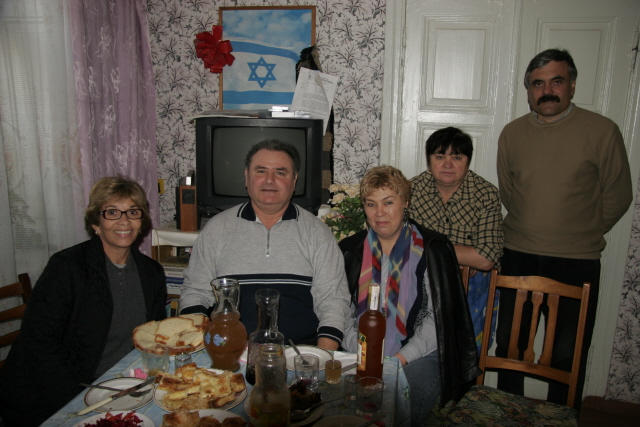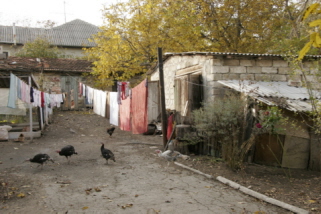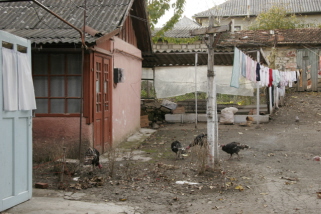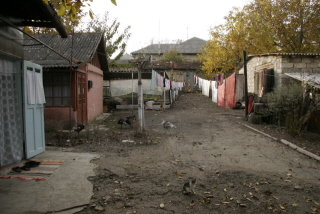

On Tuesday, October 25, we headed for
On Wednesday we were met at the hotel by the archivist, Alla, who walked with us to the Jewish Community Center. We sat down to review her genealogical findings and reviewed my notes and then we met an elderly lady who worked at the Center. She was 84 years old, but could not remember any of my relatives, although she spoke Yiddish and we could communicate. We were then introduced to Olga, one of the educators at the Center who gave us a complete tour of the facility and told us about the Jewish community.
We met three classes of very young children (who
were
learning in Russian), and who spoke to us in English. We saw the
libraries; the
Center museum and the computer room, the music room, the drama
area. They have
one lending library and one library for Jewish and non-Jewish students
who come
in to study at the Center from the University. Olga explained to
us that since
part of their income comes from the state, the Joint has cut back on
the amount
they used to fund. Many of the children’s programs were now in
need of funding.
It’s a very old building, but there is a lot of pride here. There
are 15,000 Jews
in this large city of
Olga was so lovely and so hospitable, and then prepared a package for us: books that the children use, DVDs of music and the history of Moldovan Jews, and brochures for us to take home.
My tour guide, Natalie, met Len and me at the
Center and
took us on a walking tour of old Kishinev. We
were reminded that the most infamous of all the pogroms was the
massacre in
We went on to Orhei, a 40-minute drive, where
Simeon
Rapaport was waiting for us for lunch at his home. Simeon is
quite a
character. He loves life and, fortunately for us, he spoke
Yiddish fluently.
Simeon is the president of the Jewish community, and the fourth
generation in
Orhei. Anna had prepared the lunch for us. Anna had been
the cook for the old
age Jewish home. She prepared all kinds of bagelach for us—potato
bagelach,
cheese bagelach, pumpkin bagelach—and they tasted just like my bubbe
had baked.
She had all kinds of eggplant salad, beet salad, home baked pastries
for
dessert. It was all delicious.
 |
From Left
to Right: Myrna Simon, Simeon Rapaport (Current head of Jewish Community and Myrna's host), Natalia Alhazov (Myrna's guide), Anna (Simeon's cook), Simeon's friend and future head of the Jewish Community |
Simeon had some home made wine that he insisted
we drink.
When we had tasted enough red wine, he insisted on white wine. He was a
very
interesting person. His wife and two grown children are already living
in
We went off to visit the Orhei Jewish cemetery, and again, no luck in finding my ancestors. Since Simeon was the president of the Jewish community, he had the journal of the listings of the graves in the cemetery. There was not one name that I could identify. It was, however, so amazing to be in the cemetery where my ancestors could very well be, and to be in Orhei where my grandmother and great grandparents had lived and walked. We stopped to take an exterior photo of the old synagogue in Orhei. There are only about 100 Jews living in Orhei now, a shtetl from the past. By the way, this is the birthplace of Meir Dizengoff, the first mayor of Tel Aviv.
Natalie had told us that this was indeed a typical shtetl. We saw the old homes and old buildings; the roads were unpaved and potholes about a foot deep; animals were grazing everywhere, even in the cemetery; elderly women all bent over carrying their heavy sacks—the complete picture from Fiddler on the Roof. |
 |
 |
| Back to Family Memoirs Section of the
Main Page |
Back to the Top of the Main Page |